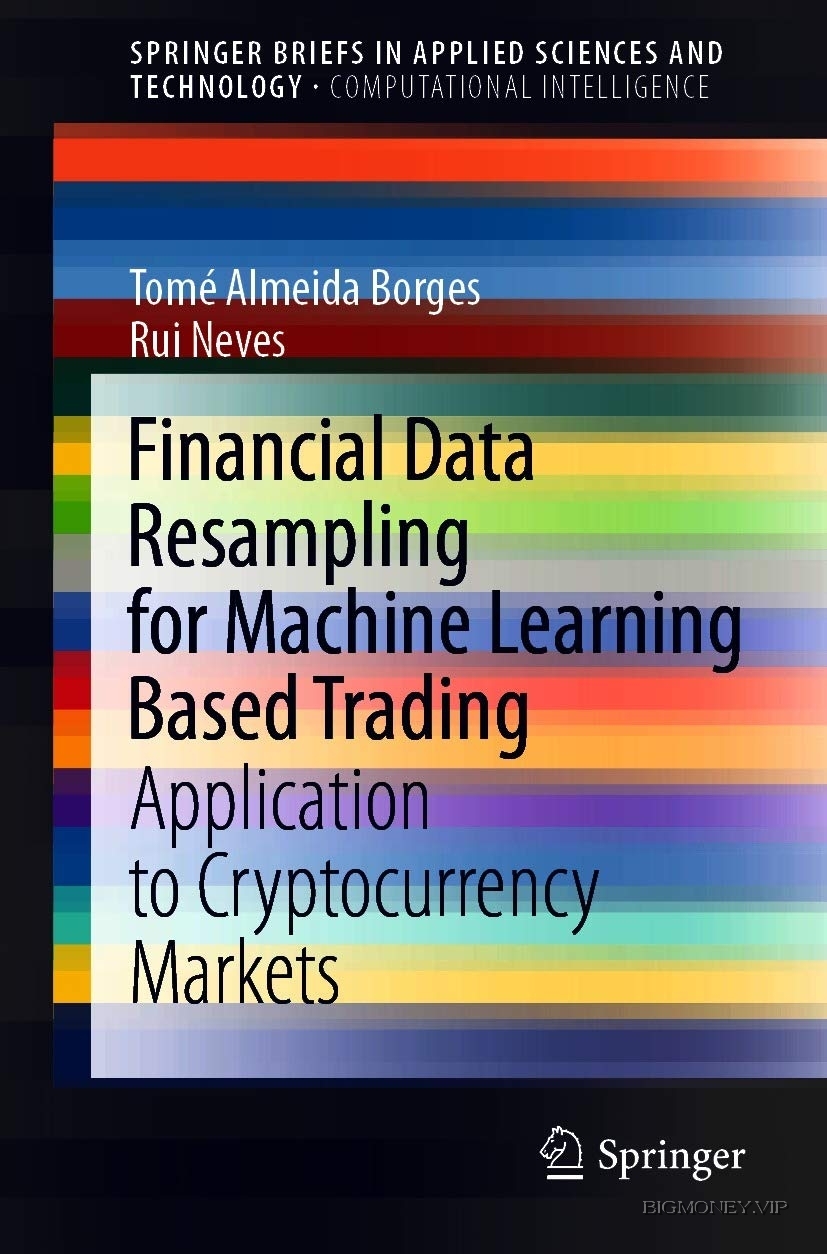
1. Introduction
Tomé Almeida Borges
and Rui Neves
Instituto Superior Técnico, Instituto de Telecomunicações, Lisbon,
Portugal
Tomé Almeida Borges
Email: tomeborges@tecnico.ulisboa.pt
1.1 Work’s Purpose
The main purpose of this book is to demonstrate the advantage of utilizing
resampled financial data when forecasting the future movements of
economic markets. With this intention, a realistic system capable of
predicting the optimal market entry and exit points in cryptocurrency
exchange markets was created through the maximization of negative
logarithmic loss in order to obtain the maximum returns while minimizing
the risk. This system obviously had to be apt to be implemented in a real
life investment scenario. The optimal market entry and exit points are
derived from predicting the direction of price variations for several
cryptocurrency pairs with the smallest forecasting error leading to the
reduction of investment risk.
To accomplish this objective, firstly four different data resampling
processes are computed to be later compared. Secondly, four different
machine learning methods are employed to predict the future price
directions. In the end, the predictions from each method are aggregated into
a fifth prediction method as an attempt to obtain a better performance
relatively to each individual machine learning method.
Finally, each of the five predictions for each of the four resampling
methods (20 instances per market in total), are simulated through backtest
trading in a real case scenario. The economic results as well as other metrics
associated with machine learning forecasting obtained from the simulation
of the several forecasting methods are benchmarked against a simple Buy
and Hold strategy and compared among each other.
1.2 Main Contributions
The main contributions of this work are:
Development of a framework consisting of several supervised machine
learning procedures to trade in a relatively new market, the
Cryptocurrencies Market;
Compare the performance of 5 different types of forecasting trading
signals amongst themselves and with a Buy and Hold strategy as
baseline;
Compare the difference in returns and overall results between a financial
time series resampled according to a parameter derived from trading
activity, namely, a logarithmic, a fixed or a percentual variation to a
commonly used time sampled time series, as baseline.
1.3 Document Structure
The structure for this book is the following:
Chapter 2 contains the theory and key concepts behind the developed
work. It begins with an introduction to Cryptocurrencies followed by
some notions regarding market analysis and forecasting. An introduction
to each of the learning methods employed in this work is given as well.
Finally, some existing strategies that seek to address analogous problems
are described.
Chapter 3 documents the entire proposed system architecture in detail,
explaining each of the main modules that constitute it.
Chapter 4 describes the data, metrics and the benchmark strategy used to
perform system validation. Afterwards, the obtained results are displayed.
Chapter 5 summarizes this work, supplies the respective conclusion and
presents some suggestions for future work.




